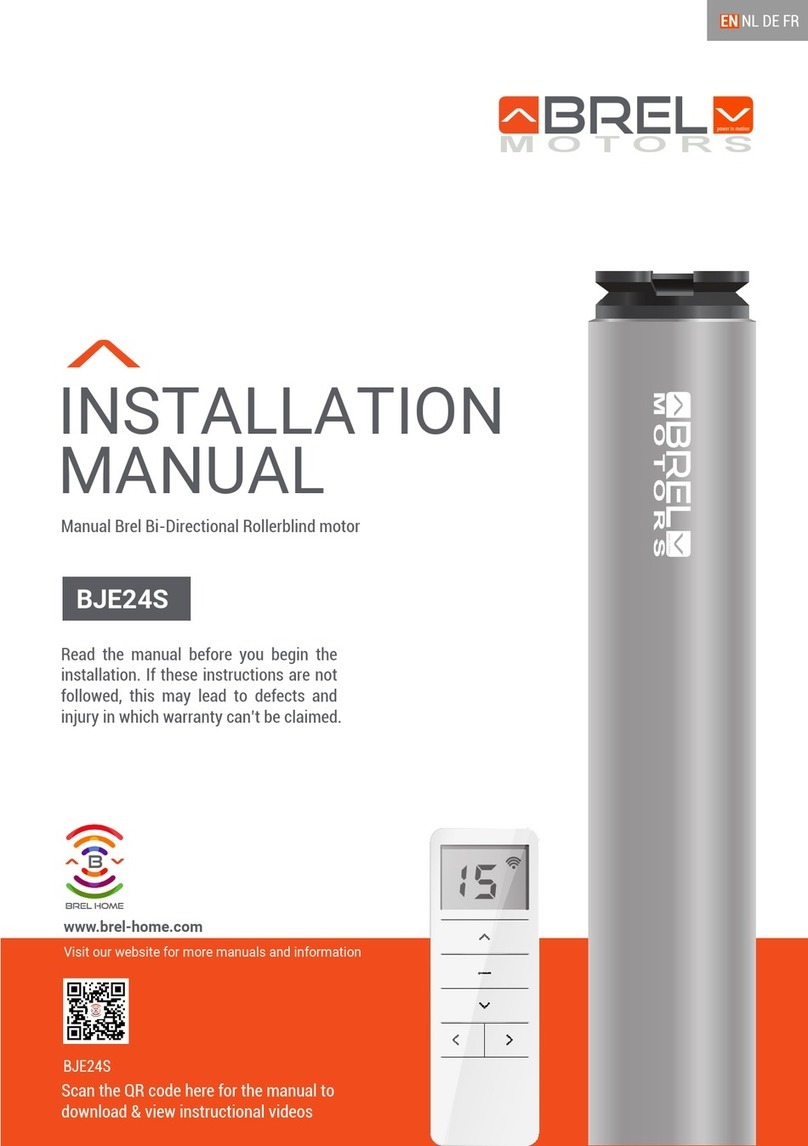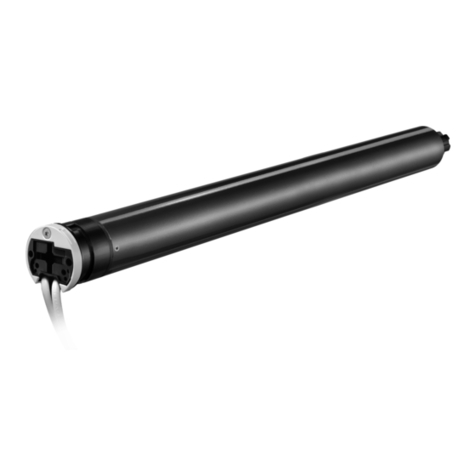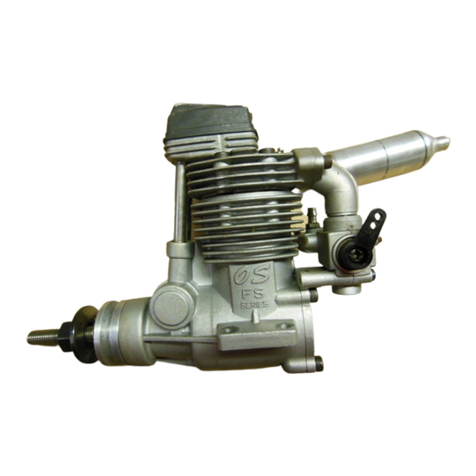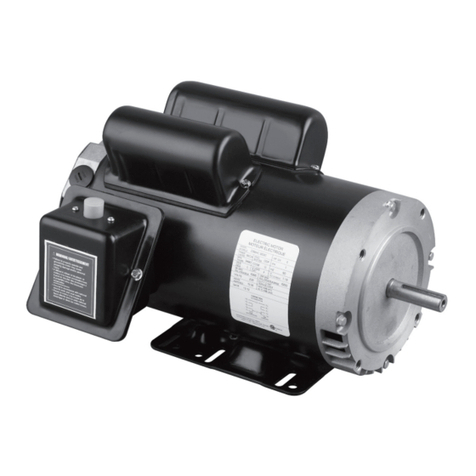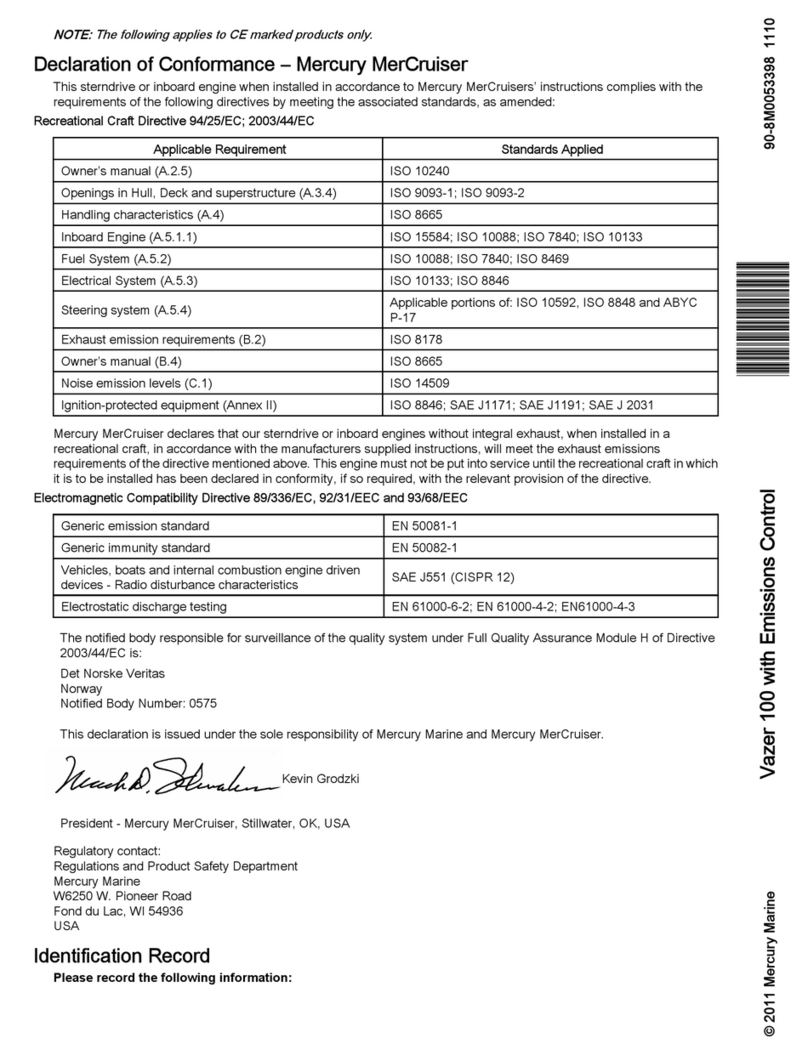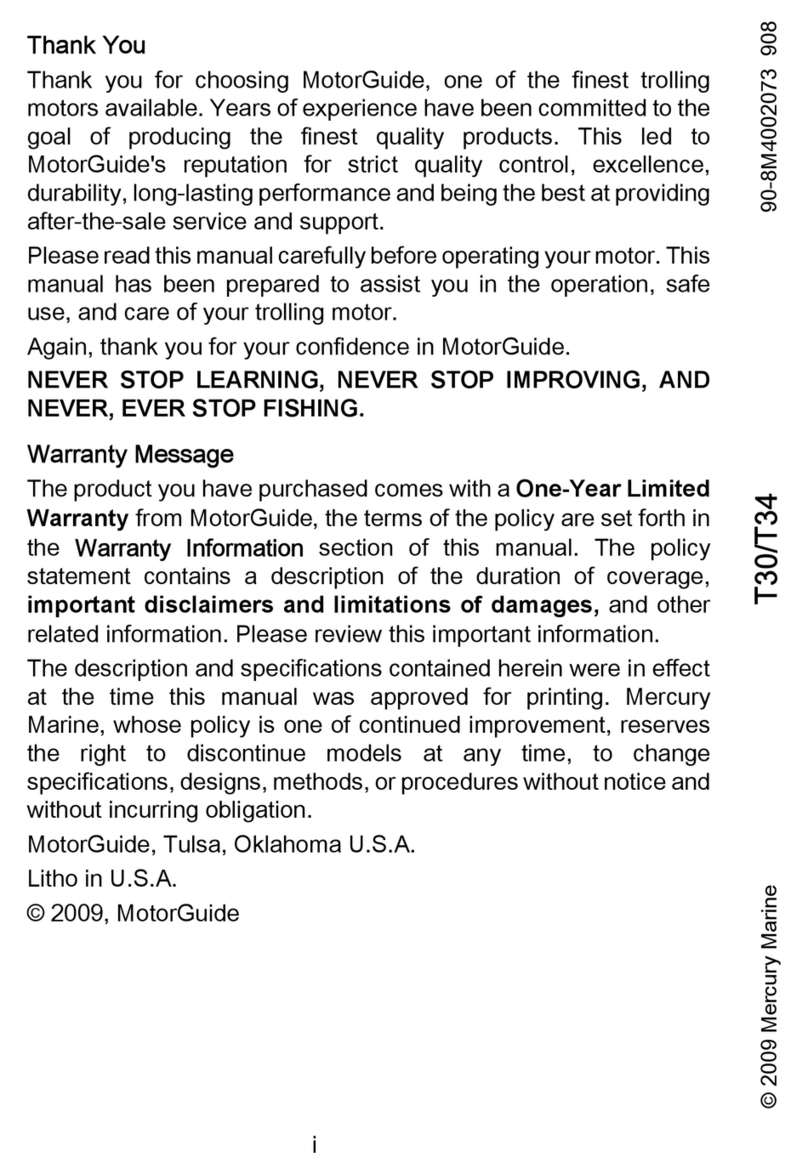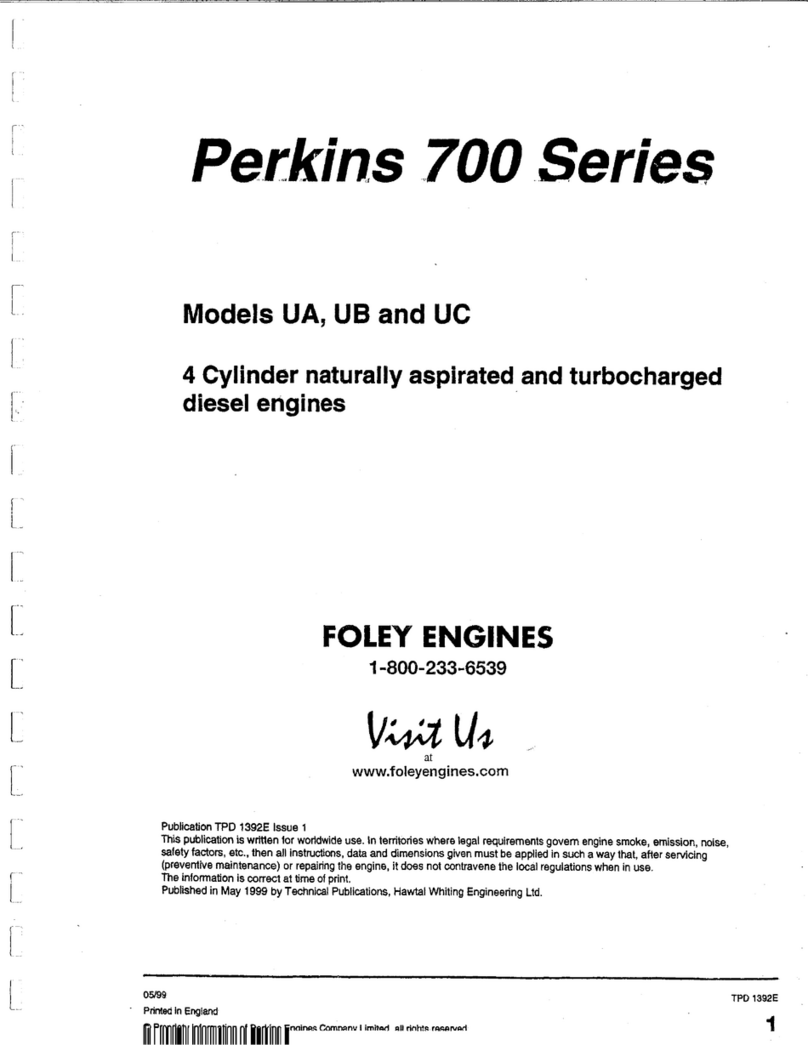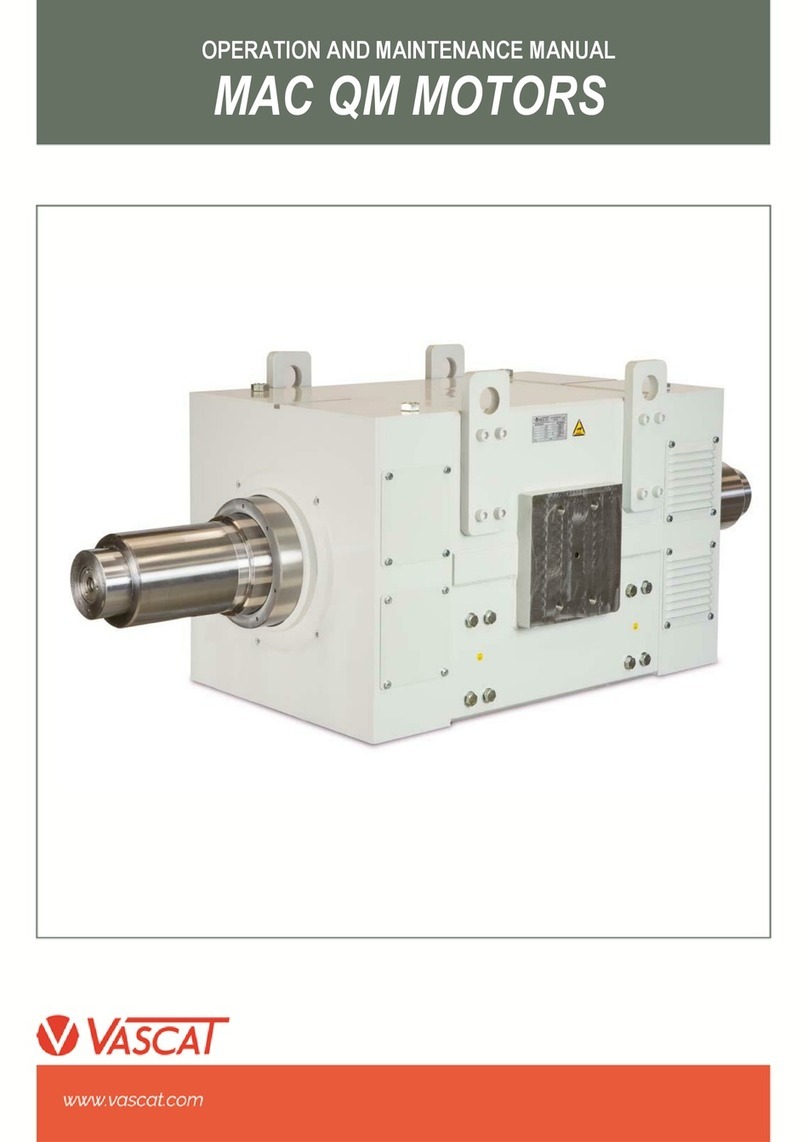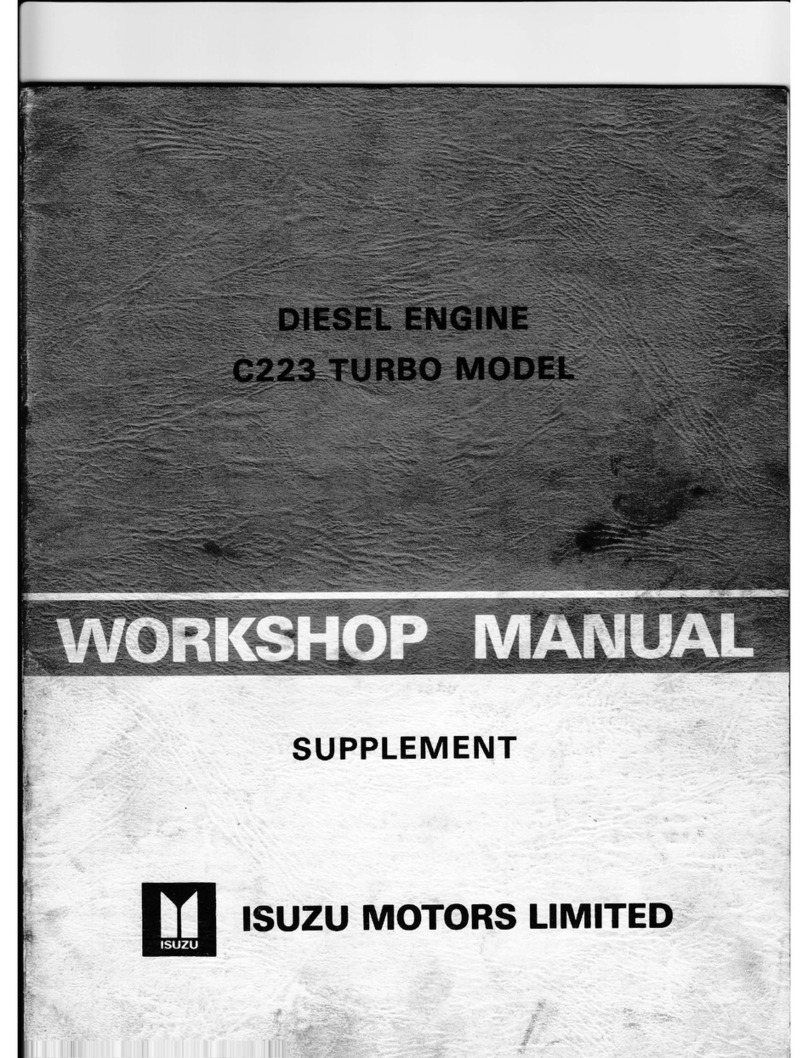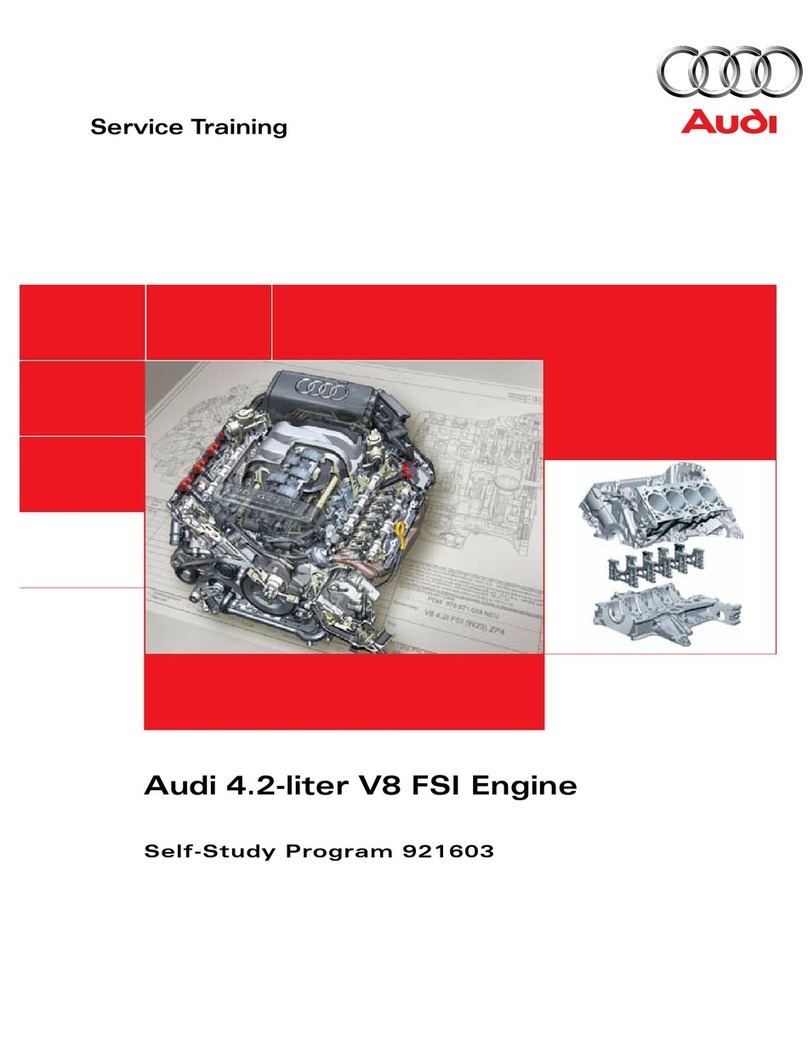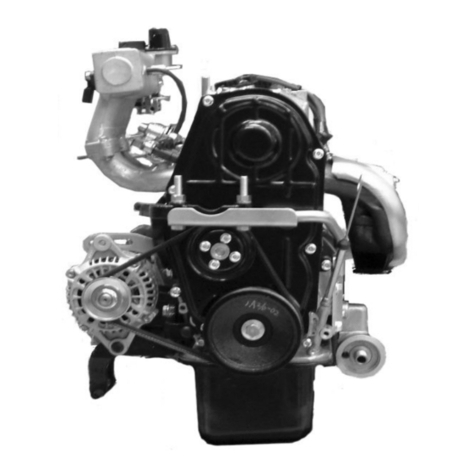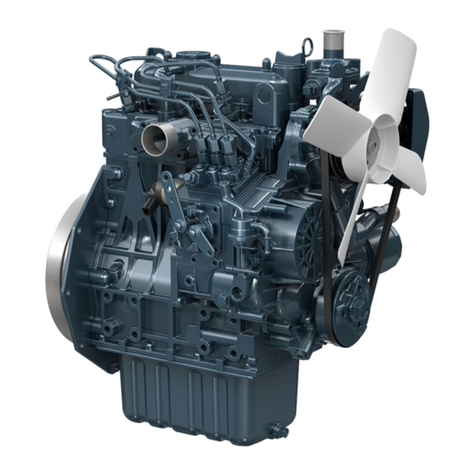CG TAO-659 Manual

CAMTECH/97/E/TM/3.0
TM Maintenance Handbook January’97
MAINTENANCE HANDBOOK ON
TRACTION MOTOR TAO - 659

CAMTECH/97/E/TM/3.0
TM Maintenance Handbook January’97
2
CONTENTS
CONTENTS ii
CORRECTION SLIP iv
Chapter 1 INTRODUCTION 1
1.2 Specification 1
1.3 Power supply arrangement 3
1.4 Fixing arrangement 4
1.5 Constructional features 5
1.5.1 Stator frame 5
1.5.2 Armature 6
1.5.3 Armature bearing 7
1.5.4 Commutator 7
1.5.5 Brushes and Brush holder 9
1.5.6 Rocker assembly 9
1.5.7 End shields 10
1.5.8 Pinoin 10
1.6 Principle of working ofD.C.Motor 11
Chapter 2 INSPECTION SCHEDULE 13
2.1 Maintenance activities with TM in position 13
2.2 During IA and IB schedule 13
2.3 During IS schedule 14
2.4 Flow chart for checking brush holder and
Carbon brushes. 16
2.5 Steps for Inspection of Tm TAO-659. 17
2.6 overhauling Schedule 19
2.7 Disassembly 21
2.7.1 Disassembly of Armature 21
2.7.2 Disassembly of End shield (PE) 21
2.7.3 Disassembly of End shield (CE) 22

CAMTECH/97/E/TM/3.0
TM Maintenance Handbook January’97
3
2.7.4 Disassembly of Armature Bearing 22
2.7.5 Cleaning of Armature Bearing 24
2.7.6 Checking o Armature bearing
24
2.7.7 Maintenance of Rocker equipment 24
2.7.8 Maintenance of Commutator 25
2.8 Reassembly of Traction Motor TAO – 659 27
2.8.1 Preparation 27
2.8.2 Reassembly of Roller Bearing Rings 27
2.8.3 Reassembly of Armature 28
2.8.4 Reassembly of Rocker Ring 29
2.8.5 Shrink fit of Pinion 29
Chapter 3 FAILURES AND TESTING 31
3.1 Common Failures Causes and Remedies 31
3.2 Testing of Traction Motor TAO-659 34
3.2.1 Insulation Resistance Test 34
3.2.2 Dielectric Test 34
3.2.3 Polarity Test 34
3.2.4 Voltage drop test forCommutator segments 35
3.2.5 Ovality Test 35
3.2.6 Heat Run Test 35
Appendix A LIST OF RDSO MODIFICATION 36
Appendix B LIST OF RDSO SPECIAL MAINTENANCE
Appendix C LIST OF MACHINE, TOOLS AND SPARES 40
Appendix D SUGGESTIONS FROM VARIOUS ELECTRIC LOCO SHEDS 42
DISTRIBUTION LIST 43

CAMTECH/97/E/TM/3.0
TM Maintenance Handbook January’97
CHAPTER 1
INTRODUCTION
1.1 Traction Motor is the most important part of a locomotive. This motor is mostly
a D.C. Series Commutator Motor, therefore it requires regular maintenance. A
large no. of loco-failures are caused due to bad maintenance of Traction-
Motors. Therefore it is essential to ensure proper & regular maintenance of
Traction Motors. It is observed that, the correct maintenance practices as rec-
ommended by manufacturers & RDSO generally remain confined to Manuals
and do not percolate upto Artisan’s level. The artisan is not taught about the
benefits of right maintenance and the repercussions of bad maintenance.
Therefore need is felt for developing a comprehensive Training Package, which
shall help the Artisans to learn about correct maintenance practices and which
shall also serve as a useful guide to the Trainers of the Training Schools. This
training package is proposed to comprise of a maintenance handbook, Do’s &
Don’ts booklet, Lesson plan, Transparencies, Wall posters & Videocassettes.
Since majority of traction-motors are of TAO-659 type, this training-package is
kept limited to this type of TM only.
1.2
SPECIFICATIONS
The general technical specifications of the motor are:
Make : Alsthom/CLW.
Type : TAO-659
Insulation : Class `H’ (Both armature & field)
Suspension : Axle hung nose suspended.
Ventilation : Air forced.
Weight (complete) : 2800 Kg.
Temperature rise : Armature - 140°C, Field - 160°C.
Coil resistance : At 110°C
a) Armature - 0.012 Ω
b) Main Pole - 0.01117Ω
c) Inter Pole- 0.008 Ω
Rating : Continuos One Hour

CAMTECH/97/E/TM/3.0
TM Maintenance Handbook January’97
2
HP : 770 HP 798 HP
Shaft output : 575 kW
Voltage : 750 V DC 750 V, Max-800/2 V
Current : 840 Amps. 855 Amps.
Speed : 1095 RPM 2500 RPM (max)
Air gap : Main Pole Inter pole
5.5 mm. 6.0 mm
Armature :
Weight : 850 KGs.
Length : 390 mm.
Core OD : 500 mm.
Laminations : 0.5 mm thick, Gr. No. 260
Net weight of : 67 Kgs.
copper
Winding : Lap - progressive.
Commutator :
Diameter : New - 380 mm, Condemning - 364 mm.
Useful length : 140 mm.
Radial wear : 8 mm (max)
No.of segments : 276 Nos.
Mica thickness : 1.2 mm (between segments)
Mica under : 1.8 + 0.2 + 0
cutting depth + 0
Brushes :
Grade : EG 367 or EG 105.
No.of holders : 6 Nos.
Brush/holder : 3 Nos.
Size : 2 x 8x43
Min. height : New - 52 mm., Worn - 27 mm.
Spring pressure : 2.2 to 2.4 Kgs.

CAMTECH/97/E/TM/3.0
TM Maintenance Handbook January’97
3
Gear Ratio : 62:15, 58:21
Permanent shunt : 5 %
Bearing
Type : CE -NJ 318, PE -NU 328
Make : SKF, NBC, FAG, NORMA
Lubrication : Shell Albania EP 2.
Clearance : Diametrical - CE 0.30 mm
- PE 0.035 mm
1.3
POWER SUPPLY ARRANGEMENT
All the six Nos. of TMs on the locomotive are fed through RSI unit (Rectifier
unit). There are three types of arrangements which can be made to supply the
power to these motors as shown in figures accordingly the motors can be
grouped in three ways i.e. 3s-2p, 2s-3p or 6p
1.3.1 Series-Parallel Combination (3s-2p)
Motors on axles 1-4-2 are in series,
similarly Motors on axles 3-6-5 are in se-
ries. These two series groups are con-
nected in parallel. Though this combi-
nation is more economic but in case of
failure of any one of the TM, the loco-
power drastically reduces by 50% which is
the main draw back of this combination. This combination of Tration Motors is
therefore being phased out gradually.
1.3.2
Parallel Combination (2s-3p)
This is also called `P’ combination. Gen-
erally motors on axles 1, 4 are in series,
similarly Motors on axles 2,5 and accord-
ingly motors on axles 3&6 are in series.
One group has to be isolated in case of any
TM problem, which reduces power of the
locomotive by 33%.
Figure 1.1
Figure 1.2

CAMTECH/97/E/TM/3.0
TM Maintenance Handbook January’97
4
1.3.3
6 P Combination
In this combination, all six TMs are
connected in parallel, and each gets full
voltage as shown in figure 1.3. This com-
bination is therefore suitable for low
torque & high speeds.
1.3.3.1
Advantages
■
There is less tendency of wheel slip.
■
Suitable to produce high tractive effort.
■
Individual TM can be isolated in case of any failure arised on individual TM
1.3.3.2
Disadvantages
■
High current rating of transformer is required.
■
Two RSI units, two smoothing reactors are provided which increases the
number of auxiliaries, and weight of the locomotive.
■
Number of contactors and links are increased.
Since advantages outweigh the disadvantages, this combination is preferred.
1.4
Fixing Arrangement
The individual TM is mounted on the wheel set directly by coupling its
counter part, axle cap by means of o8 Nos. of bolts, size M 36 x 210 / 150,
4mm pitch. The Traction Motor is suspended in between the wheel set and Bo-
gie Frame lugs by inserting a sandwich mounting block in between bogie lugs
and the TM lugs.
A gear case is also fixed on the wheel set, which covers both the TM pinion
as well as the gear on the wheel set. The gear case contains a lubricating com-
pound, generally SC- 170 to lubricate the gears.
Figure 1.3

CAMTECH/97/E/TM/3.0
TM Maintenance Handbook January’97
5
1.5
CONSTRUCTIONAL FEATURES
The traction motor TAO-659 has the following main parts:
1.5.1
Stator Frame
This is a cast steel
magnet frame
consisting of main
poles and interpoles
fixed to it. On the
Commutator side,
opening has been
provided for upper air
inlets (from MVMT)
and lower inspection
cover. The terminal
box is situated above
the axle side. To the backside of frame, two lugs are extended for suspending
the TM in bogie frame by means of inserting a sandwich-mounting block in
between the TM lugs & the bogie lugs. For securing the gear case, this frame is
also facilitated two eyes on the top & bottom and two inside threaded holes at
the pinion end as shown in figure 1.4. The another counter part of the frame is
axle cap, which facilitated the axle bearings (half of each PE & CE) oil pumps,
wickpads etc. The two oil wicks containers are in communication with each
other through an oil passage situated at the upper part of the axle cap. Oil is
supplied from an axle driven oil pump in central oil sump; oil delivery being
assured in both running directions. Any surplus oil of the containers returns to
the pump. Axle cap is also having an arrangement for providing earthing
shunts, which allows the return current to rail through the axle & wheel
assembly.
Figure 1.4

CAMTECH/97/E/TM/3.0
TM Maintenance Handbook January’97
6
1.5.2
Armature
It is the rotating member of the
motor, consisting of a number of cop-
per conductors suitably placed and
connected so as to form a closed
winding. The armature consisting of
slots, teeth, winding and the core is
shown in figure 1.5. The rotating ar-
mature is subjected to an alternating
flux varying at frequency of 20 to 50
Hz, depending upon the number of
poles and speed (f= PN/120), which gives rise to eddy currents and hysteresis
losses in the armature core and teeth. The eddy-current loss is directly propor-
tional to the square of the thickness. Therefore the armature is built up of 0.4 to
0.5 mm thick magnetic steel laminations, insulated from one another by a thin
layer of class `H’ varnish. The punching are keyed to armature shaft. Longitudi-
nal ventilating ducts are provided in the core to improve the cooling.
Assembled hot in a press, the laminations are maintained by a cast steel
armature head at pinion end, and at other, by the cast steel armature sleeves
retained on the shaft by set ring and retaining ring at pinion end.
1.5.2.1
Armature Winding
It is composed of high conductivity electrolytic copper conductor, with 2/3-
tape kapton, bunch insulation being made by:
■
Glass mica silicon tape on the involute portion.
■
Nomex silicon mica wrapper in the slot portion.
The coils are maintained in the slots by moulded “Durestos” slot wedges or
laminated fibreglass slot wedges and by poly glass tape. The Choice of
armature winding is decided as following:
■
When the armature current is not high, a simple wave winding is preferred.
But for high armature current, number of parallel path should be more, as a
result lap winding is preferred because number of parallel path equals to
number of poles.
Figure 1.5

CAMTECH/97/E/TM/3.0
TM Maintenance Handbook January’97
7
■
Also depends on the no. of poles & the speed of the machine, normally the
current per parallel circuit should not exceed 250 Amps.
■
The armature current to be handled by the brush, should not be more than
400 Amps.
■
The pitch of the Commutator segment should be within a range of 5 to 10
mm. In case of TAO-659 Tration Motors , Armature winding is Lap
progressive type, with Nos. of parallel paths.
1.5.3
Armature Bearings
The armature is supported on two roller bearings mounted on cast steel end
shields. Fitment of these bearings must be in parallel. Greasing gun is used for
greasing the bearings. Labyrinth type oil seals are fitted and evacuation of used
grease is ensured by the service greasing overflow outlets.
1.5.4
Commutator
Commutator of TAO-659 TM
consisting of a 276 nos. of copper
segments, properly insulated from each
other. The function of a Commutator is
to invert DC input wave to an AC wave in
the armature winding.
It is built up of a number of small
wedge shaped segments of high
conductivity hard drawn copper, insulated
from each other by mica or micanite separators of about 0.8 mm thickness to
avoid jumping of brushes and resultant sparking. The Commutator segments are
assembled over an insulated steel cylinder of V-cone shaped. The assembly is
forced and press fitted on the shaft.
The ends of the armature coils are directly soldered to the Commutator
base, when the Commutator diameter is approximately equal to the armature
diameter. However, when the difference in the two diameters is appreciable as
in case of TAO-659 Traction Motors, the ends of the armature coils are con-
nected to the Commutator with the half of risers shown in figure 1.6.
1.5.4.1
Commutation
Figure 1.6

CAMTECH/97/E/TM/3.0
TM Maintenance Handbook January’97
8
The emf generated in the armature conductor of DC machine is alternating
and as such the current in a particular conductor is in one direction when the
conductor is moving under the north pole and in the reverse direction, when it is
moving under south pole. This reversal of current in a coil will take place when
the two Commutator segments to which the coil is connected are being short-
circuited by a brush. The process of reversal of current in a coil is termed
`COMMUTATION’.
The reversal of high current in an inductive circuit in such a short time may
pose certain difficulties causing considerable sparking at two brushes. From the
physical considerations, the commutation process is of complex nature, in
which various mechanical, thermal, electrochemical & electromagnetic factors
are closely interwoven.
The rapid reversal of current in the armature core sets up a self-induced emf,
generally called reactance voltage, which tends to delay the current reversal in
the coil. As a result, the current in the short circuit coil does not attain its full
value in the reverse direction by the end of short circuit. This is the basic cause
of sparking at Commutator. Hence the reactance voltage is mainly responsible
for sparking at the brushes of DC machines.
1.5.4.2
Method of improving Commutation
Sparking at the brushes can be minimised with an improvement in the
commutation by providing special commutating poles (interpoles), placed mid
way between the main poles and wound with comparatively few turns and
connected in series with the armature winding. For DC generators, their polarity
should be the same as the next main pole in the direction of rotation. For DC
motors, the polarity should be opposite to above .The field produced by the
interpole winding opposes the armature field.
The mmf developed by the interpole must be stronger than the armature
mmf in the neutral zone, because this mmf has to cancel the armature mmf and
in addition induce an emf in short circuited coil which opposes reactance volt-
age and the voltage drop at the brushes. If the mmf on the interpole is too
weak, it would lead to retarded commutation and if it is too strong accelerated
commutation is achieved. In both the cases sparking will be occur at brushes

CAMTECH/97/E/TM/3.0
TM Maintenance Handbook January’97
9
and Commutator. Hence, the mmf on the interpole must be estimated correctly,
so as to achieve sparkles commutation.
Use of high reactance brushes (carbon brushes) and using brushes wide
enough to cover two or three segments, further improve commutation.
1.5.5
Brushes and Brush Holder
Brushes are needed to collect the
current through rotating Commutator or
to lead the current to it. Normally
brushes are made up of carbon and
graphite. So that the Commutator
surface is not spoiled.
This brush is accommodated in
brush holder as shown in figure 1.7,
where a spring presses it against the
Commutator. A flexible copper
conductor securely fixed into brush is used to make the connection between
brush and its brush holder.
The numbers of brush holders are usually equal to the number of main poles
in DC machine. The brush holder is one of the major component/part of the
rocker assembly. One brush holder in TAO-659 contains set of 3 brushes.
1.5.6 Rocker assembly
It is a circular steel ring on which 06
numbers of brushes holders, insulators and
copper connecting leads are fixed. It serves
is to keep the gap between brush-holders
and to maintain the neutral axis. This ring
has facility to rotate so that each brush can
be seen or replaced through inspection
cover.
It has following major components:
■
Rocker ring.
■
Brush holders.
Figure 1.7
Figure 1.8

CAMTECH/97/E/TM/3.0
TM Maintenance Handbook January’97
10
■
Insulators - These are glass bonded mica insulators.
■
Connecting leads- made of electrolytic grade copper rods.
■
Final assembly.
All six brush holders are positioned exactly 60°apart, on the rocker ring with
the help of insulator. The concentricity of all the inner faces of the brush holders
with respect to diameter of the rocker ring should be within required limit. The
maximum error allowed in the pitch of leading edges of the carbon brushes is
0.1 mm. which works out to 0.029 degrees (0 degree, 1 minute, 47 seconds)
maximum angular deviation from 60°. This is permissible between the centre
lines of any two adjacent brushes.
1.5.7
End shields
The TM TAO -659 has two nos. of cast steel end shields at both the ends i.e.
at pinion end & at Commutator end. Both are mounted with roller bearings for
supporting the armature.
A grease nipple and bearing covers are also facilitated for greasing the
bearings during maintenance schedule and for protecting the bearings from
dust & foreign bodies.
1.5.8
Pinion
It is made of high-speed carbon steel, shrinkly fitted on the armature head of
TM. This pinion has 15 or 21 teeth and is directly geared up with the gear of the
wheel set and responsible for driving the wheel set and ultimately the
locomotive.
1.6
WORKING PRINCIPLE OF D.C. MOTOR
The field system is stationary supplied
through main poles on stator frame. The
armature winding is a closed winding through
the Commutator, which is supplied through the
brushes, which are placed along the neutral/axis
on the Commutator. The mmf produced by the
Figure 1.9

CAMTECH/97/E/TM/3.0
TM Maintenance Handbook January’97
11
field (F
f
) along the magnetic axis while the current flowing through the armature
produces an mmf (F
a
) directed along the brush axis. The two mmfs are in
space quardrature and occur simultaneously in the motor. They react with each
other and develop a torque under whose action the armature rotates. A voltage
induced in armature can be determined by the Fleming’s left-hand rule. The
mmfs and the direction of rotation of the armature are illustrated in figure 1.9.
1.6.1
Speed Torque characteristics Of DC Series Motor
The filed winding is connected in series with
armature as shown in figure 1.10, hence the
armature current (I
a
) and the field current are
the same. Back emf (E
b
) of DC motor is given
by:
E
b
= V- I
a
R
a
(Neglecting small field
resistance)
E
b
I
a
= VI
a
-I
a2
R
a
(Mechanical power developed)
Where, VI
a
= Total electrical power supplied
I
a2
R
a
= Power wasted in armature (armature copper losses).
If, T
a
is the Torque developed by armature running at the speed of `N’
numbers of revolutions per minute then,
Mechanical power developed, E
b
I
a
= 2 πN T
a
/
60 Watts
or, T
a
= (60 / 2 π). E
b
I
a
/
N
φ= flux
and E
b
= P φZ N 60 A
Z = No. of armature
Therefore T
a
= 0.159 P φI
a
Z
/
A N-m.
conductors.
In case of DC series motor ,
φ
∝I
a
P = No. of poles.
Then T
a
∝I
a2
and
A = No. of parallel paths.
N = E
b
60 A P Z φ
R
a
= Armature resistance
= K E
b
φK = A constant.
Figure 1.10

CAMTECH/97/E/TM/3.0
TM Maintenance Handbook January’97
12
At light loads I
a
and hence φwill be
quite low and E
b
will be high, therefore
`N’ may become quite high. However
as the load on the motor increases,
speed will decrease rapidly & with
further increase in armature current,
the increase in flux is quite small
because of saturation effect & hence
the curve flattens out (as shown in
figure 1.11).
Similarly we see that at low speeds, high torque can be obtained, and with
increase in speed, less torque is developed.
This characteristics is particularly useful for
traction purposes, because requirement of
torque if high at starting, whereas once
the train is in motion the low friction
resistance reduces the torque requirement
for a given load.
This characteristics (as shown in figure 1.12) clearly indicated that DC series
motor should never be started without load, which is the case in traction.
Figure 1.11
Figure 1.12

CAMTECH/97/E/TM/3.0
TM Maintenance Handbook January’97
13
CHAPTER 2
INSPECTION SCHEDULE
2.1 MAINTENANCE ACTIVITIES WITH TM IN POSITION (AT A GLANCE)
2.2 DURING IA AND IB SCHEDULE
2.2.1
Commutator
■
Examine thoroughly the Commutator surface with the help of torch or hand
lamp light through inspection cover for grooves fusion and high mica, any
flash mark, crushed segments and creep.
■
Riser for solder run out and flexible contact as per SMI -34 .
■
Examine front cone for proper glaze.
TAO-659 TM
C
H
E
C
K
O
F
P
A
R
T
Commutator
Brush Holder & Rocker ring.
Carbon Brush
Gearcase & gears
Motor suspension unit
Connection lead wire, connection bar & terminal
External appearance
Ingress of rain water and dust
Oil leakage
Armature bearing
Gearcase
Motor suspension unit
Blowing out with air and cleaning
Measurement with megger
Withstand voltage (if nece
s
sary)
Insulation
Replacement of packings
of covers etc. Replacement of carbon
brushes (if necessary)
Ready for service

CAMTECH/97/E/TM/3.0
TM Maintenance Handbook January’97
14
■
Polish /clean complete Commutator surface by taking slight movement of
locomotive.
2.2.2
Brush Gear
■
Measure and record size of all carbon brushes (condemn limit 27 mm.) .
■
Examine brush holder insulators for proper glaze.
2.2.3
Inspection Cover
■
Ensure existence, condition and proper fitment of both top and bottom
inspection cover.
2.2.4
Arcing Horns
■
Condition of arcing horns & clearance
■
Check flexible assembly.
2.3
DURING IC SCHEDULE
In addition to above, the following points also to be inspected and work to be
carried out during IC schedule
.
2.3.1
Commutator
■
Clean commutator with sprit / petrol and cloth.
■
Inspect visually commutator end banding and risers for any abnormality.
2.3.2
Brush Gear
■
Measure brush box to commutator
clearance and adjust if required.
■
Measure spring pressure on
brushes, 2.2 to 2.4 kgs. and check
up condition.
■
Examine the condition of pig tails
and replace carbon brushes if
reached to condemning size.
■
Check up spring pins by hand .
■
Rotate rocker arm of all six TMs and Check brush holders and insulators.
Rocker ring should be unlocked first, using the tool, as shown in figure 2.1.
2.3.3
Arcing Horns
Figure 2.1

CAMTECH/97/E/TM/3.0
TM Maintenance Handbook January’97
15
■
Check arcing ring for flash marks.
■
Clean V- cone.
2.3.4
Terminals
■
Examine outgoing interpole leads for any cracks etc.
■
Check the cover gasket of terminal cover , replace if required.
■
Check connections tightness.
■
Check tightness of wooden cleats.
■
Check the gasket of inspection cover and ensure air tightness.
■
Check setting of inter pole and field both .
■
Meggering of TMs.
■
Greasing of both end bearing

CAMTECH/97/E/TM/3.0
TM Maintenance Handbook January’97
16
2.4 FLOW CHART FOR CHECKING BRUSH HOLDER & CARBON BRUSHES
2.5 STEPS FOR INSPECTION OF TAO-659 TM ITEMS
Taking off inspection cover
Pull out dowel pin
Taking off tightening bolt of
rocker ring on cover
Taking off tightening bolt of
connection lead wire
Turning of rocker ring
Inspection of carbon brushes
Inspection of brush holders
Cleaning of insulating rod
Putting brush springs on car-
bon brushes
Rotate rocker ring in order to
meet `V’slot & `U’ slot
From CE side magnet
frame.
Pull the lever & turn the
rocker ring
Check the bolts for brushes
terminals
Repeat
for
each
brush
holder
Tightening Dowel bolt
Tightening rocker ring in bear-
ing bracket by special bolts
Setting of connection lead wire
with nut.
Using special tool.
Replace , if necessary.

CAMTECH/97/E/TM/3.0
TM Maintenance Handbook January’97
17
INSPECTION ITEMS SERVICE INSPECTION INTERVAL
LIMIT TI
IA IB IC AOH/
IOH
1. TM on general
a) Appearance
b) Inspection cover.
c) Loosening of bolts.
d) Ingress of dust & water
e) Condition of lead wire ,
cleat & contact of
terminals.
f) Grease adding to
armature bearing.
0
0
0
0
0
0
0
0
0
0
0
0
0
0
0
0
0
0
0
0
0
0
0
0
0
2. Armature
a) Glass band.
b) Commutator
I) Diameter-new 380mm
ii) Eccentricity
iii) Inequality in diameter
iv) High bar or low bar.
v) Under cutting depth.
vi) Chamfering.
vii) Width of riser.
viii) Difference of voltage
drop between bars.
ix) Di-electric test.
3. Armature coil
a) Cleaning.
b) Insulation test
364 mm
0.1 mm
0.06 mm
0.005 mm
1.8 mm
0.4 mm
5 %
0
0
0
0
0
0
0
0
0
0
0
0
4. Shaft, bearing & pinion
a) Diameter of shaft bear-
ing on pinion end.
b) Diameter of shaft bear-
ing on commutator end
c) Taking off, cleaning ins-
pection & oiling of Brg.
d) Radial clearance of
roller bearing on PE.
e) Radial clearance of
roller bearing on CE.
f) Ultrasonic testing of
armature shaft.
0
0
0
0
0
0
Table of contents
